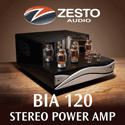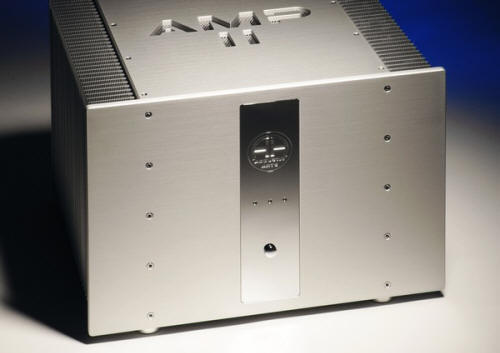|
|
You are reading the older HTML site
Positive Feedback ISSUE 71
accustic arts Tube PreAmp ll Mk2 and Amp ll Mk2 as reviewed by Gary Lea
Part Two – The AMP This is a continuation of my review of these two Accustic Arts pieces. I pick up where I left off at the end of the PreAmp II Mk2 review. I left a bit of a crumb and a spoiler alert at the end of that review and it seems an appropriate opening for this part of the review. The combination of the Accustic Arts PreAmp II Mk2 and the Amp II Mk2 is a union not to be taken lightly. First the requisite propaganda, and as I always do I will provide you with the manufacturers comments directly. "The basic circuitry and design concept of the current Amp II Mk2 is based on this original version. Naturally, over the years the Amp II Mk2 has been and continues to be refined and improved. But, as you would expect with a "classic", the typical cubic housing design remains unchanged. The top priority in the development of the Amp II Mk2 was a perfect signal feed, with short distances using the finest components. Some of the components are individually selected, as this is the only way to realize the perfect measurement values which form the basis for the breathtakingly beautiful sound of this dynamic amplifier. The Amp II Mk2 is a so-called "dual-mono power amplifier," i.e. apart from the common mains cable both channels are completely separated from each other—from the transformer to the output stage board. This ensures the excellent values, for example, for channel separation and signal to noise ratio, etc. The high performance and simultaneously extremely low distortion in the Amp II Mk2 is achieved using 2 x 1100 VA transformers, a filtering capacity of 160,000 µF, 24 selected MOSFET output transistors and much more. The result of this substantial over sizing is that even when working under high loads the components are never stretched to their limit of performance, and therefore ensure the described excellent values. The Amp II Mk2 works with Class A operation in most applications. And, despite its enormous power, the Amp II Mk2 reproduces the finest details with extreme precision, in our opinion just as one would expect from a real reference product." The driver stage of the Amp II Mk2 works on the principle of the current mirror. This circuit principle enables power to be drawn from an existing current. The Amp II Mk2 is therefore a "power-controlled" output amplifier whereby the large number of MOSFET transistors ensures a very high current capacity without having to stretch the transistors to their performance limit. The Amp II Mk2 is therefore also suitable for impedance critical or low-ohm loudspeaker systems. Ingenious circuitry removes the need for a servo controller for the "offset" and the quiescent current is generated via the IC or current mirror driver. As a result, direct and alternating current errors (DC and music signal errors) are immediately corrected. This means the total offset is exclusively determined by the quality and symmetry of the used ICs. The heavy parts: Dual-mono reference power amplifier with completely isolated power supply for each amplifier channel 24 selected MOS-FET output transistors of finest quality Magnetically shielded and encapsulated toroidal core transformer of premium quality for highest output reserves Maximum total transformer power: 2,200 VA (watts) Optimum smoothing thanks to 160,000 µF power supply capacity; Premium quality capacitors ("Made in Germany") Very high damping factor for perfect speaker control Professional protection circuit against clipping, HF oscillations and too high DC offset Integrated switch-on current limitation for highest operational safety Constant low operating temperature due to generously dimensioned heat sinks Balanced input (XLR) and unbalanced input (RCA) – the inputs are switchable All used components and parts are selected and of highest quality Very high quality, gold-plated bi-wiring/bi-amping speaker terminal Extremely stable, massive and resonance optimized housing, fully made of aluminum; inlay made of massive brass, polished and chromed So again here we are at the part of this session where we have to attempt to relate what all this means to the ears. What it means is a whole lot of nothing and yet a great deal of everything! Once I mated the Amp II to the PreAmp II I wondered aloud to myself if this subsequently created a system 4? What with two pieces dubbed II together it seems logical that the grouping would result in an Accustic Arts Amp/PreAMP MK4 system (II plus II – get it?). I think I will offer this marketing genius to Accustic Arts for a small fee! My comments from the Pre-Amp review in regards to the listening session are actually very similar, but tweaked to point out the individual contribution of the amp. I spent the first half of my review time having the pre-amp resident in my system with my Music Envoy amps. Then came time to take the Envoys out and replace them with the Amp II. The change to the system brought about some noticeable and quite satisfying changes to the overall presentation of the music. For continuity I stuck with the same playlist and in the pretty much the same order as I did with the pre-amp. I started my sessions this time on the combined unit listening to my normal selection of songs. As is generally the case I tend to start with a familiar old friend. In Eva Cassidy's, "Somewhere Over the Rainbow" from her Songbird album, what I immediately noticed about the delivery of the Amp ll was that there was a stark contrast between this amp and the Music Envoys, but not in the way I was expecting. What happened was that this amp had surprising warmth to it. While it did not have as much warmth as the Envoys, it did seem to remove a bit of a halo, or veil, off the music. It was slight, but enough to make me immediately notice it. As with the addition of the Pre-Amp II into the system there was a sudden change to the overall dynamic. It was suddenly less laid back and a bit more "in your face," but not the least bit offensive, just different and definitely more articulate in detail. The result right out of the start was a more dynamic presentation that had more defined edges to everything. I then brought up a song that I recently stumbled upon while watching Jools Holland's show on TV. I was passively listening, got up to go to the other room for a second, and when I returned a singer was fronting a band, and I was drawn into the music. I had no idea as I sat there at first who the singer was. I was just drawn into the voice and the melody. Neither the song nor the singer blew me away, but I was enjoying it. I kept looking at the face of this rather slender gent, and suddenly it dawned on me that I was grooving to the soulful vibes of a rejuvenated, healthy, and vocally fit George Allen O'Dowd, more affectionately known as Boy George, whom I have always said I could not stand. I thought of him as a frivolous flash in the pan, more attention grabbing for the extreme gender bending than for any real vocal talent. Lo and behold I had to do a bit of re-examination of his talent. The song, "King of Everything" off his new album This Is What I Do, showed a matured singer who has risen from the ashes with a more refined voice and a sensibility that totally eluded him in his younger days. He now appears to be more concerned with being a serious singer and artist than a freaky side show character. This particular song has a solid back beat, and a self descriptive story that is captivating. Through a system being fronted by the Accustic Arts PreAmp II MK2 you are right in front of the singer, and he drew you near enough to think he was simply telling you he was back with a vengeance. No, I do not plan on joining the Boy George fan club, but I did enjoy the song. There was the solid rhythm section fully backing the typical pop tune ensemble. The piano not only delivered the notes but also the percussive nature the instrument operates by. It was delivered in way that actually felt like I was sitting in the audience during the Holland show. Good bass delivered in a tuneful manner, but with impact and the kick drum driving the whole thing and pushing enough air to move the hair on your head. Right there up close with a small group of club goers who just stumbled on the resurfacing of a has-been reborn. His voice was articulate and very strong with smoothness and an almost pleasing quality to it that I do not remember him to have possessed in the past. As we were heading into the holiday season I could not pass up a chance to add Emerson, Lake and Palmer's, "Father Christmas" from Come See the Show, The Best of ELP to my list. Easily the most cynical Christmas song ever written, and arguably one of the most beautiful! All of the sparkle of the acoustic twelve string guitar which supports the entire song, the string ensemble and full orchestra were there in full force with incredible detail, depth, and a width of the soundstage it would take to reproduce this piece live. At the point that the synthesized bass comes in it moves you a couple of inches in your chair. Shortly after that part of the song there is a harmonic chiming of the guitar, and the chime is brilliantly full with the requisite bloom and decay that you would have heard had you been listening to it live. Tympani drums filled the room along with all of the brass. I almost expected my ceiling to open and angels to descend from heaven. The presentation from the soft intro, through the build up and the climax of the end was absolutely glorious! Where I ended my official last session was with a song, that for various reasons has become very near and dear to me and that is Warren Zevon's "Keep Me in Your Heart" from his final album The Wind.
Stark, direct, and self-confessing, this tune hits deep in the soul and requires a sound system that merely conveys the pain, the resolve, and the hope of one man that he will not be forgotten as the moments of his life are rapidly ticking down. When most are faced with imminent mortality it tends to draw the most naked, uncluttered, and raw emotions out of us all. It is in those moments that most pure feelings and thoughts come to the surface. (I know as I have been there more than once in my own life) This is not something you want a HiFi system to alter by injecting its own biases into the musical performance. With "Keep Me in Your Heart" the presentation was, well to put it bluntly, honest! I am not sure there is much more to convey about the musical presentation that the Accustic Arts unit provided. In a way it sounds anticlimactic, but in reality it was an astonishing moment. Nothing false added. No strident highs with any biting edge, nor was there a fuzzy bloating masquerading as warmth. It was natural and much like I would have heard if a few of my musician friends and I had grabbed some guitars and sat around playing music together. It literally brought a dying man, who could easily be my friend, into my listening room where he shared with me through his music a concern we all have about being lost to time and other lives that continue after we leave this life. Intimate, raw, moving, sad, and yet somehow comforting to know I am not alone in that particular concern. All of the emotion just flowed out of the system into the room and enveloped me like a warm blanket. This effect was even more pronounced with the insertion of the Amp II in the system. Soundstage breadth and depth were impressive, and every song seemed to have an innate intimacy that I was not expecting it to create. What is missing in this amp that I usually find in solid state amps is an overly analytical presentation to the music. I think of it as a sort of sterility that I have often found to be off-putting. As the years roll on it seems that this trait is less and less prevalent. Them Amp II has none of that in the musical presentation. It is more natural and less biting than I am used to. It seems that some manufacturers are mastering the black art of making solid state more ear-friendly. That is just my opinion, but I feel it is the case. This is one of three solid state amps I have reviewed over the past 17 years that I would be happy having in residency in my system. Both the Amp II and the PreAmp II reviewed separately are exemplary pieces, and I would recommend that anyone looking for the grunt of solid state with the warmth, ambience, and lack of edge of tubes, this is a great combo. As a standalone amp the Amp II represents the evolution of today's higher end solid-state pieces and their ability to deliver slam, detail, and sparkle with less of the edginess and in-your-face analytical sound that plagued solid state components for so long. This amp would do well in just about any system, but really comes into its own when mated to the PreAmp II, as they were absolutely made for each other. Check them out. You won't be sorry you did. Gary Lea
Accustic Arts AMP II MK2
Accustic Arts USA
|










